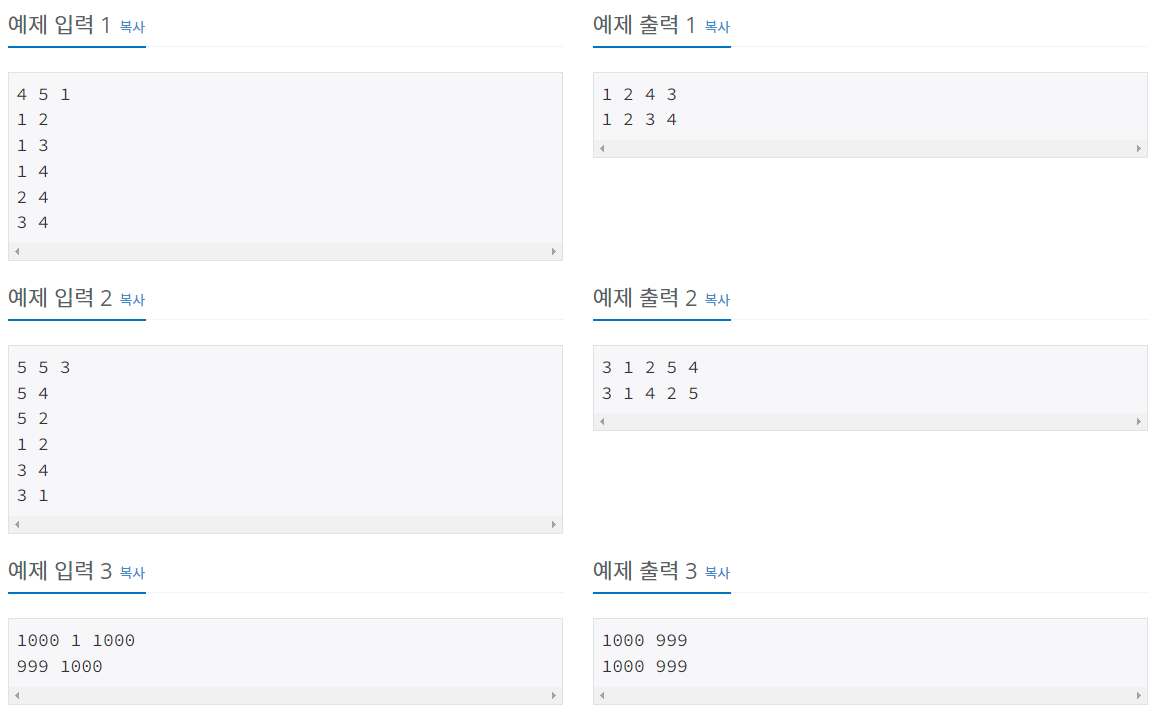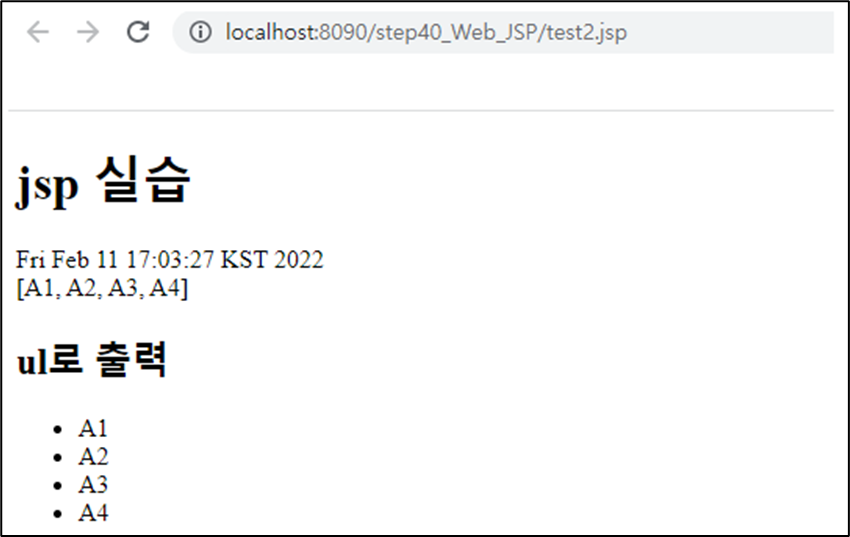바이러스
문제 설명
신종 바이러스인 웜 바이러스는 네트워크를 통해 전파된다. 한 컴퓨터가 웜 바이러스에 걸리면 그 컴퓨터와 네트워크 상에서 연결되어 있는 모든 컴퓨터는 웜 바이러스에 걸리게 된다.
예를 들어 7대의 컴퓨터가 <그림 1>과 같이 네트워크 상에서 연결되어 있다고 하자. 1번 컴퓨터가 웜 바이러스에 걸리면 웜 바이러스는 2번과 5번 컴퓨터를 거쳐 3번과 6번 컴퓨터까지 전파되어 2, 3, 5, 6 네 대의 컴퓨터는 웜 바이러스에 걸리게 된다. 하지만 4번과 7번 컴퓨터는 1번 컴퓨터와 네트워크상에서 연결되어 있지 않기 때문에 영향을 받지 않는다.

어느 날 1번 컴퓨터가 웜 바이러스에 걸렸다. 컴퓨터의 수와 네트워크 상에서 서로 연결되어 있는 정보가 주어질 때, 1번 컴퓨터를 통해 웜 바이러스에 걸리게 되는 컴퓨터의 수를 출력하는 프로그램을 작성하시오.
입력
첫째 줄에는 컴퓨터의 수가 주어진다. 컴퓨터의 수는 100 이하이고 각 컴퓨터에는 1번 부터 차례대로 번호가 매겨진다. 둘째 줄에는 네트워크 상에서 직접 연결되어 있는 컴퓨터 쌍의 수가 주어진다. 이어서 그 수만큼 한 줄에 한 쌍씩 네트워크 상에서 직접 연결되어 있는 컴퓨터의 번호 쌍이 주어진다.
출력
1번 컴퓨터가 웜 바이러스에 걸렸을 때, 1번 컴퓨터를 통해 웜 바이러스에 걸리게 되는 컴퓨터의 수를 첫째 줄에 출력한다.
입출력 예제

Python 코드
# 정점의 연결정보 입력받기
n= int(input()) # 정점 // 컴퓨터의 수
m = int(input()) # 연결수 // 연결된 컴퓨터 쌍의 수
graph = [[] for _ in range(n+1)] # 연결된 컴퓨터 쌍의 수 만큼 반복
for _ in range(m):
a, b = map(int, input().split())
graph[a].append(b)
graph[b].append(a)
visited_dfs = []
def dfs(graph, cur_node, visited):
# 현재 노드를 방문처리
visited.append(cur_node)
graph[cur_node].sort()
# 현재 노드와 인접한 노드를 확인
for link_node in graph[cur_node]:
# 방문하지 않은 노드라면 재귀호출
if link_node not in visited:
dfs(graph, link_node, visited)
dfs(graph, 1, visited_dfs)
print(len(visited_dfs)-1)
* DFS 참고 링크 1 : https://jiwon-coding.tistory.com/93
* DFS 참고 링크 2 : https://devmath.tistory.com/21
from collections import deque
n=int(input())
m=int(input())
computers=[[0]*(n+1) for _ in range(n+1)]
for _ in range(m):
a,b=map(int,input().split())
computers[a][b]=1
computers[b][a]=1
visited=[0]*(n+1)
q=deque()
q.append(1)
visited[1]=1
cnt=0
while q:
now=q.popleft()
for i in range(1,n+1):
if computers[now][i]==1 and visited[i]==0: #연결되어있고 방문한적없으면
visited[i]=1
q.append(i)
cnt+=1
print(cnt)
C++ 코드
#include <stdio.h>
#include <stdlib.h>
int map[101][101] = {0};
int visit[101] = {0};
int computer_num, ans = 0;
void dfs(int n){
ans++;
visit[n] = 1;
for (int i=1; i<=computer_num; i++){
if (map[n][i] && !visit[i])
dfs(i);
}
}
int main(){
int n;
int x, y;
scanf("%d %d", &computer_num, &n);
for (int i=0; i<n; i++){
scanf("%d %d", &x, &y);
map[x][y] = map[y][x] = 1;
}
dfs(1);
printf("%d\n", ans - 1);
}* DFS 참고 링크 : https://code-kh-studio.tistory.com/30
#include <iostream>
#include <queue>
using namespace std;
int V, E;
const int MAX = 101;
int map[MAX][MAX] = { 0, };
bool visited[MAX] = { 0, };
int ans = 0;
queue<int> q;
void BFS(int v) {
visited[v] = true;
//cout << v << " ";
q.push(v);
while (!q.empty()) {
v = q.front();
q.pop();
for (int i = 1; i <= V; i++) {
if (visited[i] == 0 && map[v][i] == 1) {
q.push(i);
visited[i] = true;
ans++;
//cout << i << " ";
}
}
}
}
int main() {
cin >> V >> E;
for (int i = 0; i < E; i++) {
int a, b;
cin >> a >> b;
map[a][b] = 1;
map[b][a] = 1;
}
BFS(1);
cout << ans;
}* BFS 참고 링크 : https://scarlettb.tistory.com/78
출처
'코딩테스트 > 백준 알고리즘' 카테고리의 다른 글
| [백준 알고리즘] 10872번 팩토리얼 파이썬 (0) | 2022.02.25 |
|---|---|
| [백준 알고리즘] 15829번 Hashing (0) | 2022.02.18 |
| [백준 알고리즘] 1260번 DFS와 BFS (0) | 2022.02.14 |
| [백준 알고리즘] 2745번 진법 변환 (0) | 2022.02.08 |
| [백준 알고리즘] 5692번 팩토리얼 진법 (0) | 2022.02.08 |








